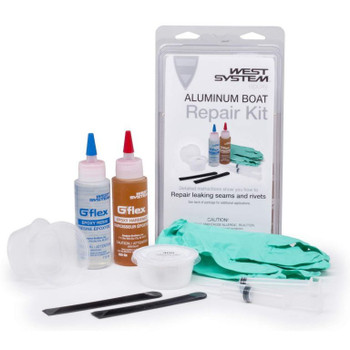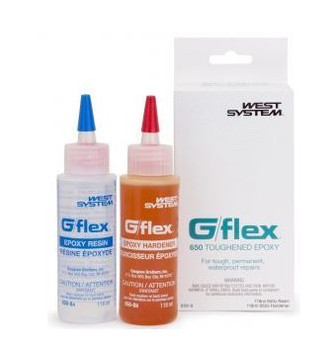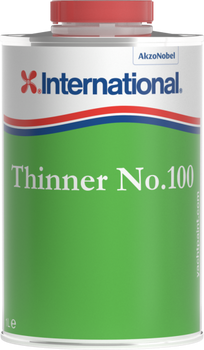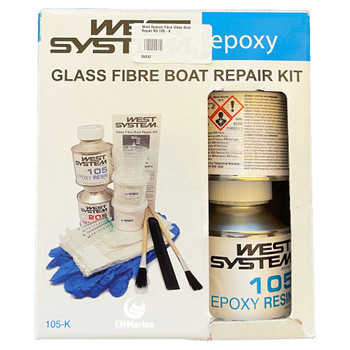West System
West System G-Flex Toughened Epoxy Kit 650-32 - 1L
- SKU:
- 36039/1
- UPC:
- 5391528463725
- MPN:
- 650-32
Description
The West System G-flex Thickened Epoxy Adhesive 650 is a toughened, versatile, 2-part epoxy for permanent waterproof bonding of plastic, fiberglass, ceramics, metals, damp and difficult-to-bond woods. With a modulus of elasticity of 150,000 PSI, G/flex 650 is a bit more flexible than standard epoxies and polyester, but much stiffer than adhesive sealants. This gives G/flex 650 the ability to make structural bonds that can absorb the stress of expansion, contraction, shock, and vibration. It is ideal for bonding dissimilar materials.
Where to use
Ideal for plastic, fiberglass, ceramics, metals, and damp and difficult-to-bond wood. Use for repairing fibre glass boats, HDPE plastic ,boats, kayaks and sailing dinghies, such as the Laser Pico, Topper Topaz etc
What is the difference between West System G/Flex 655-32 & 650.32
Essentially these are the same product however, G/flex 655-32 has been thickened to give it a higher viscosity, making a little easier to maintain its applied position.
In the Pack
- 500ml thickened epoxy adhesive resin
- 500m of thickened epoxy adhesive hardener.
Directions for use
Mixed at a 1:1 ratio: West System G-flex 655-32 gives you 45 minutes of working time at 22C. It reaches an initial cure in 3 to 4 hours and a workable cure in 7-10 hours.
Technical Data -Toughness and flexibility of G/flex Thickened Epoxy
G/flex has been toughened. This gives G/flex the ability to make structural bonds that can absorb the stresses of expansion, contraction, shock, and vibration. G/flex is resilient and impact resistant. With a modulus of elasticity of 150,000 psi (WEST SYSTEM 105 Resin/205 Hardener has a modulus of elasticity of 450,000 psi), G/flex is more flexible and can deflect further before breaking than WEST SYSTEM 105/205, while being much stiffer than typical adhesive sealants.
Adhesion to wet and damp surfaces
G/flex has the ability to glue damp woods. It can be used on wet surfaces, even underwater when applied with specific techniques.
Excellent adhesion to hard-to-bond woods
G/flex adheres tenaciously to difficult- to-glue hardwoods, both tropical and domestic varieties. This is important since many of the exotic and tropical species now being used to replace traditional woods present bonding challenges.
Bonds well to a variety of materials
G/flex® is ideal for bonding a variety of materials, including dissimilar ones. G/flex has a superior grip so that it can be used to bond to metals, plastics, glass, masonry, and fiberglass. G/flex is ideal for repairs to aluminum boats and polyethylene and ABS canoes and kayaks. It can also be used to wet out and bond fiberglass tapes and fabrics.
Ease of use
G/flex is a simple two-part epoxy system. Resin and hardener are mixed in a 1-to-1 mix ratio by volume. G/flex provides a relatively long open working time, yet it cures quickly and can be used in cool temperatures. Because it is simple to mix and use, G/flex is an excellent starting point for customers new to epoxy use.
The versatility of G/flex Thickened Epoxy
G/flex can be modified with WEST SYSTEM® fillers and additives if you need to meet particular bonding needs. Adding G/flex to other WEST SYSTEM epoxies can improve their toughness and flexibility.
Development of G/Flex Thickened Epoxy
G/flex is the result of years of experimentation to develop a formula for a toughened epoxy. We wanted something that was simple to use, viscous enough not to drain out of a joint, and adhered tenaciously to a variety of materials under difficult conditions. As explained more fully later (see Understanding Flexible Properties, p. 17), material properties of an epoxy form a complicated web. When you formulate for specific end properties (like high elongation), you usually have to give up other properties in order to achieve it. Some of us thought that if you formulate an epoxy with five to six times the tensile elongation of other WEST SYSTEM epoxies, the new product would be poor at dealing with constant or long-duration loads. Yet when we tested G/flex under long duration loading with our exclusive Creep Test, it performed admirably—nearly matching the 105 Resin-based epoxies.
We also wondered if an epoxy with this much elongation would perform poorly in heat resistance. Yet ASTM-D648 (Heat Deflection Under Load or HDUL) revealed G/flex performed even better than 105 Resin-based epoxies. (G/flex like all WEST SYSTEM resin/hardener combinations can handle temperatures up to 200°F repeatedly. At this temperature, it will be more flexible and less resistant to heavy durational loads than at room temperature, but it returns to full strength as it approaches room temperature.) Well, what about through cure? Usually flexible systems take days to achieve the majority of their physical properties. Our testing revealed that G/flex’s 24-hour through cure is similar to that of WEST SYSTEM 105 Resin and 205 Fast Hardener.
Adhesion Testing and Comparison of G/flex 650 (unthickened) and 655 Thickened Epoxy
How does G/flex adhere to woods and metals? Adhesion testing using the PATTI (Pneumatic Adhesion Tensile Test Instrument) on the same pieces of wood (with the wood sanded. Parallel to the grain with 80-grit sandpaper but no solvent wash) revealed that G/flex adheres to wood at least as well as any other WEST SYSTEM epoxy. With hardwoods and the often difficult-to glue species such as white oak, Ipe, teak, greenheart, purpleheart, and selangan batu, G/flex performed as much as 30% higher.
Adhesion testing with G/flex Epoxy on metals also yielded excellent results, typically exceeding the adhesion results achieved with 105 Resin-based epoxies (see Figure 1).
| Material | G/flex | Surface Prep/Conditions | Tensile Adhesion (psi) |
| G-10 high-density laminate | 650 | 80-grit sand / dry surface | 3459 |
| G-10 high-density laminate | 655 | 80-grit sand / wet surface | 2473 |
| 1018 steel | 650 | 80-grit sand / dry surface | 1772 |
| 1018 steel | 655 | 80-grit sand / wet surface | 3562 |
| Galvanized steel | 650 | 100-grit wet sand | 2562 |
| Galvanized steel | 655 | 100-grit wet sand | 2929 |
| Copper | 650 | 80-grit sand | 2334 |
| Copper | 655 | 80-grit sand | 2685 |
| Bronze | 650 | 80-grit sand | 2782 |
| Bronze | 650 | Scotch brite™ pad sand | 2962 |
| Bronze | 655 | 80-grit sand | 2936 |
| HDPE plastic | 655 | Alcohol wipe, flame treat | 1885 |
| ABS plastic | 655 | 80-grit sand | 1535 |
| Lexan™ | 655 | 80-grit sand | 1870 |
| Ipe | 650 | 60-grit sand | 2134 |
| Ipe | 655 | Plain isopropyl alcohol wipe x 3 | 2223 |
| Teak, vertical grain | 650 | 80-grit sand parallel to grain | 1413 |
| Teak, vertical grain | 655 | 80-grit sand parallel to grain | 1381 |
| Teak, vertical grain | 655 | 80-grit sand, alcohol wipe x 2 | 1503 |
| White oak, vertical grain | 650 | 80-grit sand | 1935 |
| White oak, vertical grain | 655 | 80-grit sand | 1780 |
| White oak, vertical grain | 655 | Alcohol wipe x 2 | 2212 |
| Purpleheart | 650 | 60-grit sand parallel to grain | 1731 |
We also found that G/flex® 655 Thickened Epoxy Adhesive adheres to wet and damp surfaces well. Obviously gluing to wet surfaces, especially when dealing with absorbent substrates like wood, is less than ideal because water is taking up the spaces where epoxy otherwise would find its way in; however, G/flex worked surprisingly well. Technique plays an important role in how effective a wet surface adhesion (even underwater repairs) will be. The epoxy must be thick enough to displace the water to ensure a good bond. Pre-thickened G/flex 655 Adhesive (or G/flex 650 that has been thickened with 406 Colloidal Silica to a mayonnaise consistency) is needed.




















